
I’ve just finished reading a book called ‘You are not so smart: Why your memory is mostly fiction, why you have too many friends on Facebook and 46 other ways you’re deluding yourself’.
It’s got me thinking about thinking. In particular, it’s got me thinking about cognitive distortions.
What’s a cognitive distortion?
A cognitive distortion is an inaccurate thought that affects your perception of reality. Your mind convinces you of something that isn’t exactly the case.
A simple example of a cognitive distortion is thinking that you’re dumb when in actual fact you’re quite bright.
I like to call these cognitive distortions ‘crazy talk’.
The problem with ‘crazy talk’ or delusional thinking is that it can set you on a destructive path of self-sabotage. ‘Crazy talk’ can make you miserable. It often leads to poor or at best, mediocre grades.
Bottom line is: ‘Crazy talk’ influences your mood, behavior, and motivation at a fundamental level. And this is why ‘crazy talk’ can be so dangerous.
How do you deal with ‘crazy talk’?
You need to rip it to shreds. You need to pull these crazy ideas apart so you can see them for what they are: deeply flawed and out of touch with reality. So let’s dive right in and do just that.
Here are 3 common delusional thoughts students often have:
1. “I’ll just wing it [test or exam]”
If you’re winging a test that means you haven’t studied for it. You’ve done the bare minimum (you’ve attended your classes) and you’re just going to hope for the best. Maybe you’ve said a little prayer to the test gods.
But imagine if Katy Perry, Adele, or Lady Gaga didn’t practice before a big show. Imagine if they just said, “Forget the dress rehearsal! Forget warming up my vocal cords. Forget practicing the songs…I’m just going to wing it!” What would you think? You’d probably think, “That’s a bit crazy…”.
The same thing applies with taking tests and exams: you need to do some preparation. You need to study and revise.
Whether it is taking out your notes and creating some flashcards or making a summary mind map, you need to do something! A little bit of revision can make a big difference.
But winging it? Don’t expect to do well. Expect to fail or at best, just scrape through.
2. “If only I was smarter, things would be easier…I’d do better at school”
So you think you were born average or dumb, eh? And you think this is why you find school so challenging. But in actual fact, it doesn’t work like this.
“But Johnny finds maths so easy!”, you’re thinking. “It’s a breeze for him!” But here’s the thing: you don’t know if Johnny has a private math’s tutor or if Johnny’s mother is a math’s professor. Johnny may have been exposed to mathematical ideas from a very young age.
There’s no denying the fact that some students pick things up quicker than others. I know from experience how easy it is to get fixated on people who look like they’re hardly doing any work yet achieve great results. But these students are a distraction from your studies.
The bottom line is: just because it takes you a bit longer to learn information that doesn’t mean you’re stupid. Far from it.
Your subjects are designed to be challenging. They are designed to stretch you. Don’t jump to the conclusion that because you’re struggling with a subject that this means you’re not very smart and/or not particularly good at the subject.
Professor Angela Duckworth’s research has found that effort counts twice as much as talent. She says:
“Without effort, your talent is nothing more than your unmet potential. Without effort, your skills is nothing more than what you could have done but didn’t”.
In short, doing well at school isn’t about being smart.
Success at school comes down to putting in effort. It’s about getting stuck into your studies (even when you don’t feel like it) and pushing through the discomfort when things get tough. That’s what will make you ‘smart’ like Johnny.
3. “I’ll start trying in year 12 when it really matters”
Students hope that once they get to year 12 suddenly effective study skills and habits will kick in. They think the motivation fairy will suddenly pay them a visit. Again, this is crazy talk. Here’s why:
Establishing good habits and new skills is a messy process. Change usually involves 5 steps forward and 3 (or 10 steps back).
Do you think you’re suddenly going to wake up feeling super motivated to work hard when you’ve been slacking off up until year 12? Maybe. But most likely, no. You’ll feel exactly the same as every other year.
The fact is that it takes time to acquire effective study strategies and make them part of your everyday routine. You may also have some deeply ingrained (and ineffective) study habits that aren’t so easy to break.
Here’s my advice…
Start putting in the effort and experimenting with different study strategies today. Don’t wait until year 12. Choose a strategy and apply it immediately. Don’t expect to feel comfortable as you do this. It will feel strange at first. Just know that that’s completely normal.
Then once you’ve mastered that strategy, build on it with another strategy. Keep adding to your study arsenal.
To sum up
Just to be clear, if you have any of these distorted thoughts from time to time, you should know that you’re not actually crazy. It’s just that you’re thoughts aren’t always right.
But thought can be changed and corrected through challenging them. Alternatively, you can choose to ignore each distorted thought (“Yeah yeah, talk to the hand…”) and simply carry on with doing your work.
Share This:
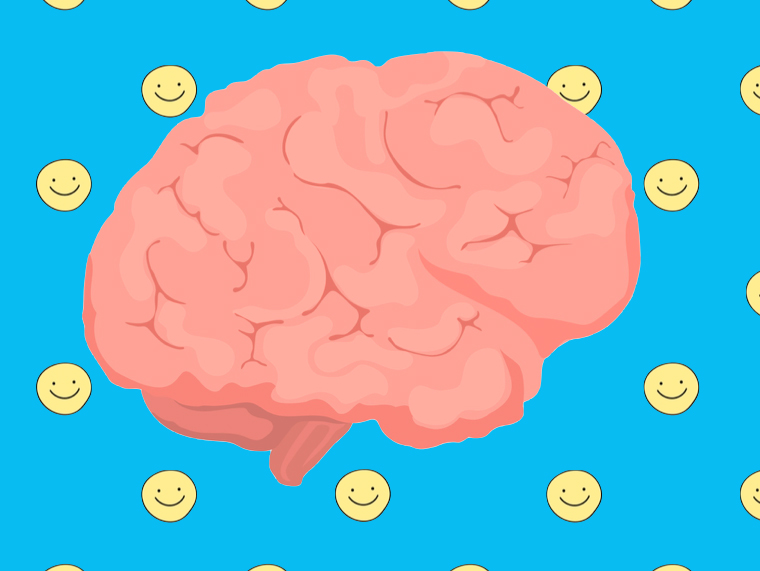
About 10 years ago I met the beloved Australian celebrity Costa Georgiardis from the television show Gardening Australia.
I was blown away by Costa’s energy and enthusiasm.
He was exactly like he appeared on TV. But he wasn’t hamming it up for the camera. Costa was the real deal.
He was high on life.
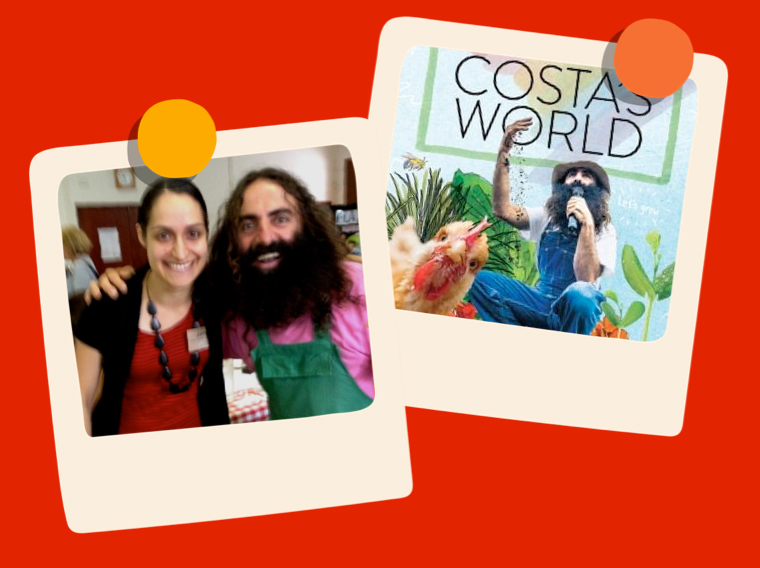
I’ve heard that people often ask Costa “Why are you so energetic?”, “Why are you so up?”, and “Don’t you get tired?”
Some people feel tired just being around Costa (check out this video to get a sense of Costa’s energy).
What’s the difference between motivated and energised people and less motivated people who struggle to get off the couch?
According to Stanford professor Dr Andrew Huberman the difference has everything to do with dopamine.
In this blog post, I want to explore how dopamine works and how you can adjust your dopamine levels to experience more motivation, focus, and energy in a safe and healthy way. Let’s go!
Dopamine is a neurotransmitter that is involved in reward processing. Your brain releases this molecule whenever it anticipates a reward.
In a healthy brain and environment, dopamine plays an important role in keeping you motivated, focused, and on track with your goals.
Unfortunately, this natural feedback system can be hijacked by big tech companies and fast food corporations.
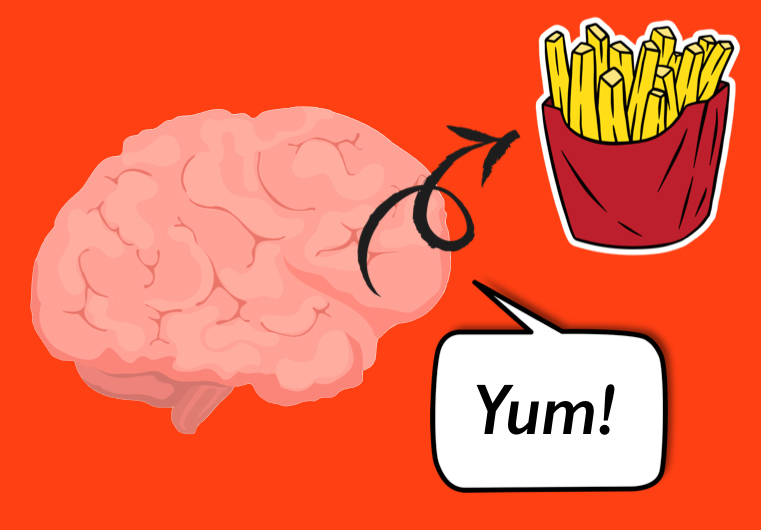
Tonic dopamine is your baseline level of dopamine that circulates through your system. People who are generally enthusiastic and motivated have a high baseline dopamine. But if you struggle with motivation and often feel lethargic, chances are you have a low baseline dopamine.
But then there’s phasic dopamine. This is where you experience peaks in dopamine above your baseline level. These peaks occur as a result of engaging in certain behaviours and/or consuming certain substances.
For example, social media companies train users to seek out quick, easy, and frequent hits of dopamine. Fast food companies engineer foods that have just the right amount of salt, fat and/or sugar to release big spikes in dopamine. This make you want to eat more of the food product and keep going back for more.
It’s important to understand that these peaks in dopamine don’t last.
After engaging in a dopamine-rich activity, you will experience an inevitable drop in dopamine. And this drop will be below your baseline level.
It should come as no surprise that when you’re in a dopamine deficit state you don’t feel very good. You experience pain and discomfort.
According to Psychiatrist Dr Anna Lembke this is our brain’s way of trying to bring everything back into balance and establish homeostasis.
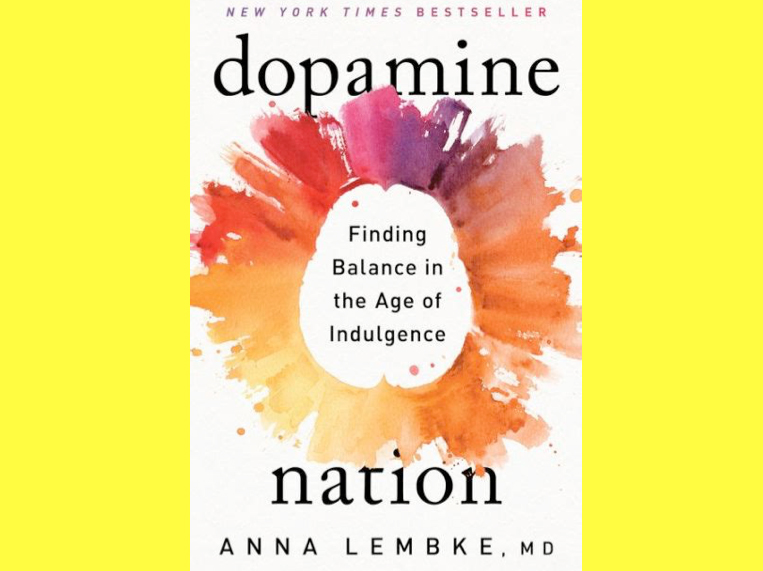
In the book Dopamine Nation Dr Lembke talks about how pleasure and pain are experienced in overlapping regions of the brain. She states:
“Pleasure and pain work like a balance”.
If you tip to the side of pleasure or pain, self regulatory mechanisms kick in to bring everything back into balance.
But you never want to tip to one side for too long. Dr Lembke states:
“With repeated exposure to the same or similar pleasure stimulus, the initial deviation to the side of pleasure gets weaker and shorter and the after-response to the side of pain gets stronger and longer, a process scientists call neuroadaptation . . . we need more of the drug of choice to get the same effect.”
In other words, consuming more of a dopamine-rich substance or behaviour is bad for your brain. It will leave you in a dopamine-deficit-state.
And when you’re in this state, it’s much harder to do your school work.
There are a number of simple things you can do to regenerate your dopamine receptors and increase your baseline dopamine. I’ve listed several strategies below.
Before you start your work or study, you want to avoid engaging in activities that will cause spikes in dopamine. If you watch TikTok videos or play video games before sitting down to do your homework, this is going to make your work feel a lot more painful and boring.
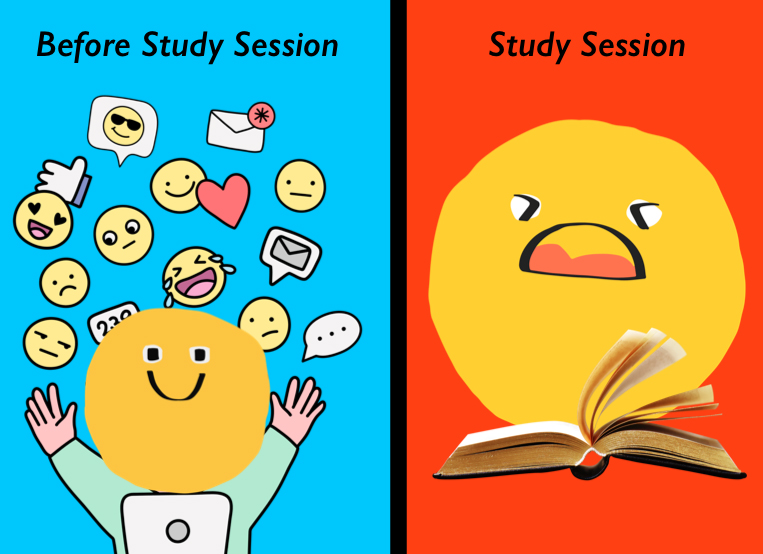
Here’s why . . .
Dr Huberman states that how motivated you feel to do a task depends on your current dopamine levels and what previous peaks in dopamine you have experienced. This is important to understand because with this knowledge, you can create routines and habits to conserve your dopamine and motivation for pursuing your goals.
With this in mind, I’ve recently simplified my morning routine in the following ways:
• I don’t start the day by looking at my phone or computer
• I exercise without listening to music
• I have a healthy breakfast of overnight oats and berries rather than a super sweet smoothie
• I have a cold shower (more on why I do this below)
Whilst this may sound boring, it’s had a dramatic impact on how easy it is for me to get stuck into doing my work.
The term ‘Dopamine Detox’ is a little misleading since it’s technically not possible to detox from dopamine. Nevertheless, the idea is a good one.
When you engage in a dopamine detox, you’re taking a break from engaging in dopamine-rich activities (e.g., consuming junk food, going on social media, and watching Netflix). This will give your dopamine receptors a chance to regenerate.
After taking a dopamine detox, you’ll probably notice that simple things like eating basic wholefoods or going for a walk are much more pleasurable. As Dr Huberman points out:
“Our perception for dopamine is heightened when our dopamine receptors haven’t seen much dopamine lately.”
Research shows that cold water therapy (i.e., being submerged in cold water) can increase your dopamine by 250% above your baseline level.
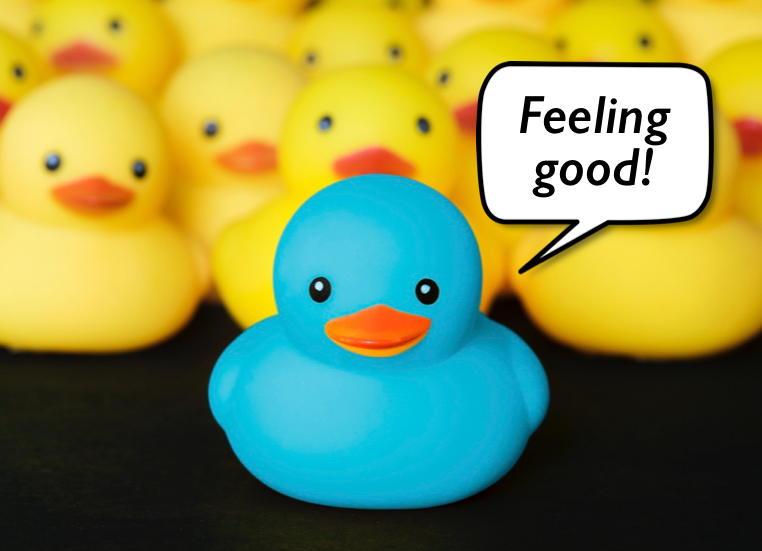
Let’s put that in context:
Chocolate increases dopamine by 150% above baseline
Alcohol increases dopamine by 200% above baseline
Nicotine increases dopamine by 225% above baseline
Cocaine increases dopamine by 350% above baseline
Amphetamines increases dopamine by 1100%
You need to remember that these peaks in dopamine are followed by a sudden crash below your baseline level. Let’s not overlook the fact that chronic substance abuse causes brain damage and can be fatal.
Unlike other addictive substances, cold showers create peaks in dopamine that can last for several hours. You also don’t experience the subsequent dramatic crash below your baseline level.
Word of warning: Before you turn on the cold shower tap or start running an ice-bath, it’s important to be aware that people can go into shock when plunging themselves into cold water. Please be careful!
If cold showers aren’t really your thing, try increasing your dopamine with exercise. Exercise has been found to increase dopamine by 130% above your baseline level.
In the book Move The Body, Heal The Mind, neuroscientist Dr Jennifer Heisz says:
“Exercise increases dopamine and repopulates dopamine receptors to help the brain heal faster during recovery [from addiction]. Although all forms of exercise can do this, runner’s high may do it best.”
Look for ways to make it harder to engage in the dopamine-rich activities. Create barriers and/or friction points to stop you from mindlessly seeking quick shots of dopamine.
For example, I recently noticed I had a problem with compulsively checking my phone. Whenever I felt bored or lonely, I’d check my phone to see if I’d received any messages. I didn’t like the fact I was doing this but I found it hard to stop. What could I do?
I could use a dumb phone.
I found a ‘seniors’ flip phone that allowed me to do basic things like make calls and send texts. But sending texts is not easy! I have to type in each letter and change from upper to lower case. It really puts you off wanting to text your friends.
Since switching to a dumb phone, the number of times I touch my phone each day has significantly decreased.

As you do your work, praise yourself for the effort you’re putting in. Doing this can increase the dopamine you have for the activity.
Dr Huberman suggests saying the following while you’re doing painful work:
“I know this is painful. But you need to keep at it. Because it’s painful, it’s going to increase my dopamine later and I’m doing this by choice.”
We live in a dopamine-rich world. It’s so easy to flood your brain with quick hits of dopamine that feel good in the moment but leave you feeling flat and irritable shortly after. These peaks in dopamine make it harder for us to pursue our goals by undermining our motivation.
No matter what your current dopamine baseline is, just remember this: you have the ability to increase your dopamine in a healthy and sustainable way. Kick-start the process today!
For many people, colouring in is a great way to reduce stress and calm the frenzied mind.
But as much as I love coloured pens, pencils and crayons, I’m not keen on colouring in. Instead of decreasing my stress levels, it has the opposite effect. It makes me feel uptight and on edge.
Why?
Because I associate colouring in with the serious business of winning at all costs.
I observed my older brother enter these competitions and effortlessly win free stuff: remote control cars, a soda stream, giant tins of chocolate powered drink and LEGO® kits.
I wanted to be like my big brother. So I picked up my pens and started colouring in.
From the age of five to eight, I spent countless hours colouring in. I learnt from a young age if I could focus my mind and stay within the lines, I could win a lot of free stuff, just as my brother did.
One Sunday morning when I was five years old, I coloured in a picture of Fat Cat for a Telethon colouring competition.
I channelled 100% of my brainpower into selecting the right coloured textas and carefully trying to stay inside the lines. I was intensely focused and determined to do my best to impress the judges.
I finished colouring in Fat Cat but I did not feel calm. I felt exhausted.
I received a letter in the mail. It stated I had won first place in the competition.
A full kid’s swing set complete with monkey bars and a slide.
It was like I had won the jackpot. I had pulled the lever on the poker machine and landed on three cherries. My brain was flooded with feel good chemicals.
I became hooked on entering kid’s competitions and the prizes started rolling in . . .
From the outside, it seemed like a bit of harmless fun: textas, colour and free stuff.
But I wish my parents had put their foot down and said “Enough!”. I wish they had boycotted my participation in those colouring in contests.
• Those contests were messing with my mind.
• Those contests were training me to become super competitive.
• Those contests made me connect my self worth with winning and having lots of stuff.
With this mindset, I never felt 100% satisfied. I was always chasing the next prize, the next big win . . .
But how can a 5-year-old child top a swing set complete with a slide and monkey bars?
I was on the hedonic treadmill.
I quickly adapted to my prizes and wanted more and more.
If I had known about a simple concept called the Gap and the Gain, I would have been a much happier kid.
I recently finished reading a fantastic book called The Gap and the Gain: The High Achievers’ Guide to Happiness, Confidence and Success by Dan Sullivan and Dr Benjamin Hardy.
The book focuses on two particular mindsets you can adopt:
1) A gap mindset (the GAP)
2) A gain mindset (the GAIN)
The authors define the GAP as “a toxic mindset that stops people from being happy and appreciating their lives.”.
When you’re in the GAP, you’re basically in the comparison trap. You’re comparing yourself to something or someone else or measuring yourself against some ideal.
Dr Benjamin Hardy states:
“Being in the GAP stops you from living within your own experience. It stops you from appreciating where you are. It stops you from being happy.”
In contrast, when you’re in the GAIN you’re focused on your own personal growth. You compare less and compete less and don’t care about what other people think of you. As Dr Hardy says, “you decide what success means to you, and you choose the life you’ll live.”
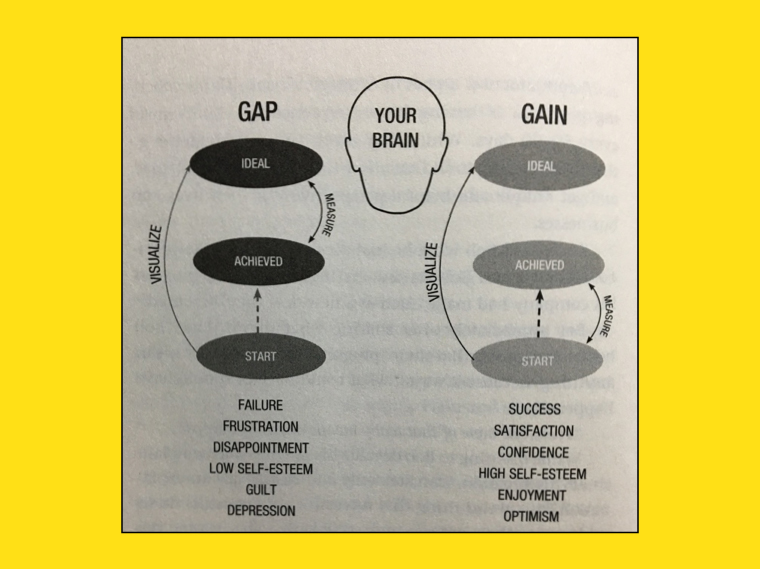
The concept of the Gap and the Gain was developed by Dan Sullivan who has coached entrepreneurs for many years in his Strategic Coach program.
Sullivan had noticed that despite these entrepreneurs having achieved huge financial and material success, a lot of them did not feel successful. In fact, many felt like failures. They were miserable because they were caught in the GAP.
Dr Hardy states:
“Most high performers or “successful” people never took the class on happiness. And there’s a thick narrative out there that in order to be the best performer you can be, “happiness” and “balance” cannot be part of the equation.”
The authors argue this narrative is flawed and they explore ways you can get out of the GAP and in the GAIN (i.e., shift from gap thinking to gain thinking).
The authors argue if you can make this shift you will feel lighter, more energised and more confident rather than feeling anxious, stressed and unhappy (signs of being stuck in the GAP mindset).
All of us fall into the GAP, multiple times a day.
How can you not?
We live in a super competitive culture. The education system, especially ATAR, is a perfect example of this. You’re being ranked against other students.
Student tell me, “I feel like I’m competing against my friends . . . I don’t like it”.
Of course you don’t like it! Trust that disturbing feeling you have. It’s telling you something is not quite right.
Competing against your friends really sucks. It’s can be downright damaging to your relationships, not to mention the toxic stress it adds to your life.
Rather than competing against one another, let’s support each other to do our best.
When we support each other and look out for each other, everyone wins. Everyone gets a bit closer to where they want to go.
Now, if you’re reading this and find yourself currently in the GAP, that’s okay. It’s totally normal.
But I’m going to share with you some simple ways to get out of the GAP and into the GAIN. Because when you’re in the GAIN, you feel happier and more motivated to pursue what really matters to you.
There are several ways you can get out of the GAP and into the GAIN. Here are three strategies I have been practising from the book The Gap and the Gain:
This involves looking at where you are now and comparing it to where you were before.
Why bother doing this?
Because we can easily forget what our lives used to be like. We adapt to our new normal. Dr Hardy states:
“You can forget what you previously struggled with and overcame. You can take for granted how far you’ve come, ignore your progress, and miss out on the confidence of remembering where you were.”
He adds:
“This is why it’s incredibly powerful and important to keep journals, records, or “annual reviews.” . . . you can look back and be reminded of the easily forgotten past.”
One simple practice the authors recommend is taking note of three gains at the end of the day. These gains can be external accomplishments (e.g. prizes and good grades) but also new experiences, personal growth, life lessons, new skills and relationships built.
I’ve been writing down my gains before I go to bed each night. This practice is incredibly simple but powerful!
Dr Hardy states social media is designed to put you in the GAP. It can distract you from your goals and strip you of the freedom to navigate life on your own terms.
If you can get off social media or reduce the time spent on it, this will help you get a clearer sense of who you are, who you want to be and where you want to go.
In the book Stand Out of Our Light: Freedom and Resistance in the Attention Economy, philosopher Dr James Williams says:
“There’s a big misalignment between the goals we have for ourselves and the goals social media companies have.”
As an ex-Google product strategist, Williams used to sit in product design meetings. So he knows the goals of big tech companies. He says they include things like:
• Number of clicks
• Time on site/app
• Number of pages viewed
• Number of advertisements viewed
• Number of conversions
I would be really surprised if you told me your goal was to spend a huge chunk of time scrolling through social media each day. But this is what a lot of people do.
This is why over a year ago, I made the decision to delete all my social media accounts.
Clicking delete was one of the the best things I ever did. I have a lot more clarity about who I am, what I stand for and what’s important to me. It also helped me to get out of gap style thinking.
In the book, Dr Hardy discusses Professor BJ Fogg’s work on Tiny Habits. He shares several Tiny Habit recipes to help us get out of the GAP. Here are a few examples from the book:
After I compare myself with another person, I will say to myself, “Are you in the GAP or the GAIN?”
After I feel discouraged, I will list 3 specific GAINS from the last 30 days.
After someone tells me about a setback, I will say, “What did you GAIN from this experience?”
We are all on different paths in life. We all have a different set of circumstances and access to certain resources. It’s time to focus our minds on doing the best we can.
Start to notice when you fall into the GAP, when you’re distracted by the goals of social media and what other people are doing. Take it from me, getting out of the GAP and thinking in terms of your gains is a much more rewarding and satisfying way to live.
With this usually comes shiny new pens, fresh notebooks and renewed hope and optimism. But this year feels a little different . . .
Last week I heard someone say:
“It’s only January but it feels like it’s the end of the year. I’m so over it.”
Can you relate?
In this blog post, I want to share with you a strategy I use to make difficult things easier to do. In other words, it’s a strategy that can make studying challenging subjects a little easier.
The other day I did my first job at a school. I’d been asked to run some study skills sessions with the senior school students.
Before I started running the workshops, I had a brief conversation with a year 11 student. It went something like this . . .
Me: How are you feeling given the situation (i.e. COVID-19)?
Year 11 Student: Some of us are stressed but it’s not because of COVID. It’s because of what our teachers have just said to us.
Me: What have your teachers been saying to you?
Year 11 Student: They keep saying this year is going to be really hard. The subjects are going to be much harder.
On my way home from the talk, I thought about what this student had said. I thought about the stressed look in her eyes.
Here’s what happened . . .
I had been asked to present a talk to 150 year 10 students. My talk was scheduled for the last period of the school day.
In case you’re not aware, the last period of the school day is not an ideal time slot for a guest speaker. It’s usually a tough gig because students are tired and they just want to go home.

When I arrived at the venue to set up, I saw two teachers. I introduced myself to them. One of them said in an alarmed tone:
“Oh! You’re the guest speaker? I just need to warn you that these students are a horrible group. They do not warm to guest speakers!”
She continued on . . .
“Does your talk have a structure to it? Do you know what you’re talking about? These year 10s are a really hard group to work with!”
I felt my stress levels begin to rise and by accident, I knocked my glass of water off the stage and it broke. Glass went everywhere. Instead of helping me pick up the glass, the teacher said:
“Look! It’s a sign of things to come!”
At this point, the young IT guy arrived to help connect my laptop to the AV system. He overheard this teacher banging on about what a bunch of ratbags these students were. He looked kind of shocked. He said to her:
“Why are you saying this to our guest presenter? I don’t think it’s helpful.”
The teacher reacted defensively. She blurted out “She needs to know! It’s important we tell her!” and then she left.
I took some deep breaths and continued setting up my stuff.
The students arrived.
I delivered the talk.
The talk went really well.
It turns out these students weren’t horrible at all. They were normal students who happened to be a bit tired and over it.
I learnt an important lesson that day: Worrying about how hard something is going to be doesn’t help. It just uses up your precious brainpower and energy that you could have spent doing something else (i.e. something more productive).
Whenever I focus on how hard something is going to be, I’m filled with fear. Imposter syndrome and self doubt kicks in (“Will I be able to do this? What if I fail and it turns out to be a total flop?”). This usually leads to a bad case of avoidance and procrastination.
In the book Make It Stick, Peter Brown explains:
“A fear of failure can poison learning by creating aversions to the kinds of experimentation and risk taking that characterize striving, or by diminishing performance under pressure, as in a test setting.”
If you feel worried that you’re not going to be able to perform well in a subject, this is going to use up a big part of your working memory capacity. Instead of thinking about the content, you’ll be thinking, “Am I going to be able to do this? What if I can’t? Should I drop the subject?”.
In short, you’ll have less brainpower to learn in class.
There’s a simple question I ask myself when something feels really hard. And it’s this . . .
Professor BJ Fogg calls this the Breakthrough Question. According to Fogg there are three ways you can make any behaviour easier to do:
1. You can increase your skills
2. Get tools and resources
3. Make the behaviour tiny
In his book Tiny Habits he explains:
“Regardless of what your aspiration is, increasing your skills, getting tools and resources, and making the behaviour tiny are what makes things easier to do. . .
Sometimes all you’ll need is the right tool to make a new habit easier to do, like using skinny floss [for flossing teeth], and other times all you have to do is scale the behaviour back to its tiniest version, such as flossing just one tooth. Think of making something easy to do as a pond with three different ways to enter the water. Whether you jump off the dock, wade in at the beach, or drop in from a rope swing, you’ll soon be swimming in the same water.”
In other words, you have plenty of options!
There are lots of things you can do to make studying those so called ‘hard’ subjects a little easier.
So with that in mind, here is a short list of ideas to get you kick-started:
If you can focus better, you can learn and retain more information. If you find yourself constantly checking your phone, put it on silent and away from your body before you sit down to study.
Strategies such as active recall (e.g. flash cards) and dual coding (e.g. mind mapping) are way more effective than rereading and highlighting your notes. Like any new skill, they take a little bit of time to get used to, but they’ll save you a lot of time in the long run.
Some textbooks explain ideas better than others. The textbook on your school booklist is not the only one (or necessarily the best one) out there, so don’t feel wedded to it. Check out other study guides and resources.
A good night’s sleep allows you to focus better in class, retain more information and feel better. Make sleep your top priority.
If you’re confused, don’t suffer in silence. Ask your teacher for help. That’s their job.
Make life easier for your future self by jotting down key ideas in class. If something is confusing, make a note (you can focus on that in a study session at home).
Create some kind of system to organise your notes, past exam papers and handout sheets. Over time, you may need to tweak and refine your system but that’s okay (I’ve been tweaking and refining my system for years).
If you feel overwhelmed by the idea of doing several hours of study each day, start with just five minutes. Five minutes of study is infinitely better than doing nothing!
Once you’ve developed the habit of sitting down and studying for 5 minutes, you can ramp it up. But start small.
When you do manage to sit down and do a little study, congratulate yourself. Say to yourself, “Good job!” This positive reinforcement makes us feel good and when we feel good, it helps wire in new habits.
When your teachers says, “This subject is going to be really hard”, what I think they’re trying to communicate to you is “You need to actually sit down and study. You can no longer wing it.” Instead of worrying, simply be in action.
You’ll feel better and do better if you focus on doing the things that make studying that subject a little easier.
Dr Jane Genovese delivers interactive sessions on learning to learn, combating procrastination, exam preparation, how to focus in the age of distraction, habit formation and much, much more!
Get FREE study and life strategies by signing up to our newsletter:
© 2024 Learning Fundamentals